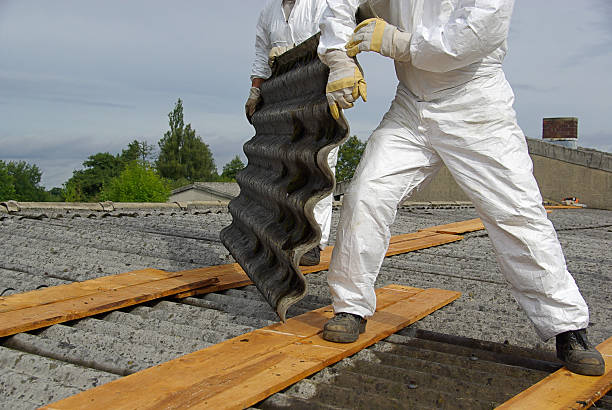Asbestosis is a chronic lung disease caused by inhaling asbestos fibers. Prolonged asbestos exposure can lead to scarred lung tissue and other asbestos-related diseases.
This article discusses the primary symptoms of asbestosis, including shortness of breath, persistent cough, chest tightness, and others, providing essential information for recognizing this serious condition.
Common Asbestosis Symptoms

These symptoms typically emerge only after a considerable period of exposure to asbestos and tend to progress slowly.
Here are the main symptoms of asbestosis:
Difficulty Breathing (Dyspnea)
This symptom arises because scar tissue formed by the asbestos particles thickens the lungs’ lining, reducing their elasticity. This makes it more difficult for the lungs to expand and contract, which impairs the ability to breathe, especially during physical activities.
Persistent Dry Cough
The irritation and damage caused by asbestos fibers in the lung tissues can lead to a chronic cough. This cough is typically dry and does not produce phlegm, reflecting the body’s reaction to the fibrosis and irritation within the lungs.
Chest Tightness or Pain
The scarring of the lung tissue not only affects lung function but can also cause pain or a feeling of tightness in the chest. This discomfort is due to the restriction and reduced flexibility in the lungs.
Clubbing of Fingers
Clubbing occurs due to low oxygen levels in the blood, a state that can arise from the reduced lung function associated with asbestosis. This symptom involves the widening and rounding of the tips of the fingers or toes and is often a sign of advanced disease.
Weight Loss and Fatigue
As the disease progresses, the increased effort required to breathe can lead to higher energy expenditure, which may cause unintentional weight loss and significant fatigue. The body’s resources are increasingly diverted towards maintaining basic respiratory functions.
Wheezing
Wheezing is a high-pitched sound that occurs when air moves through narrowed breathing passages in the lungs. It is less common in asbestosis but can occur if there is significant constriction or irritation in the airways due to the fibrotic process.
Who Is Most At Risk Of Asbestosis?

Asbestosis is primarily an occupational lung disease, resulting from prolonged asbestos exposure. The risk of developing asbestosis is significantly higher in professions and industries where asbestos is or was used extensively.
Here are the key groups most at risk:
- Construction Workers: Particularly those involved in the demolition or renovation of old buildings where asbestos was used in insulation, flooring, roofing, and other building materials.
- Shipyard Workers: Asbestos was commonly used in shipbuilding for insulation, piping, and boilers. Workers involved in building or repairing ships may be exposed to high levels of asbestos.
- Industrial Workers: This includes individuals who worked in manufacturing using asbestos-containing products such as textiles, insulation, automotive brake pads, and cement.
- Miners: Those who mined asbestos are at direct risk because of the high levels of asbestos fibers inhaled during the mining process.
- Heating and Air Conditioning Technicians: Workers who install or service heating and air conditioning systems in older buildings might be exposed to asbestos during their work.
- Family Members: Secondhand exposure can also occur. Family members of workers who handled asbestos might be at risk due to asbestos fibers brought home on clothing or equipment.
The risk of asbestosis increases with the duration and intensity of exposure to asbestos dust. Despite regulations and diminished use in many countries, older buildings and equipment still pose a significant risk.
Hence, awareness and preventive measures, including proper use of personal protective equipment, following safety protocols, and lung function tests are crucial in reducing the risk of asbestosis.

